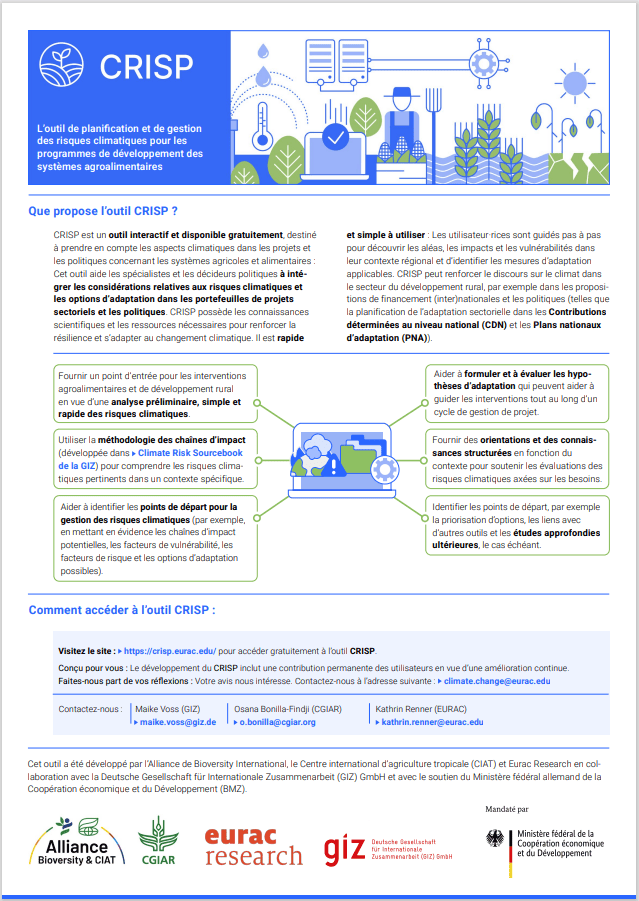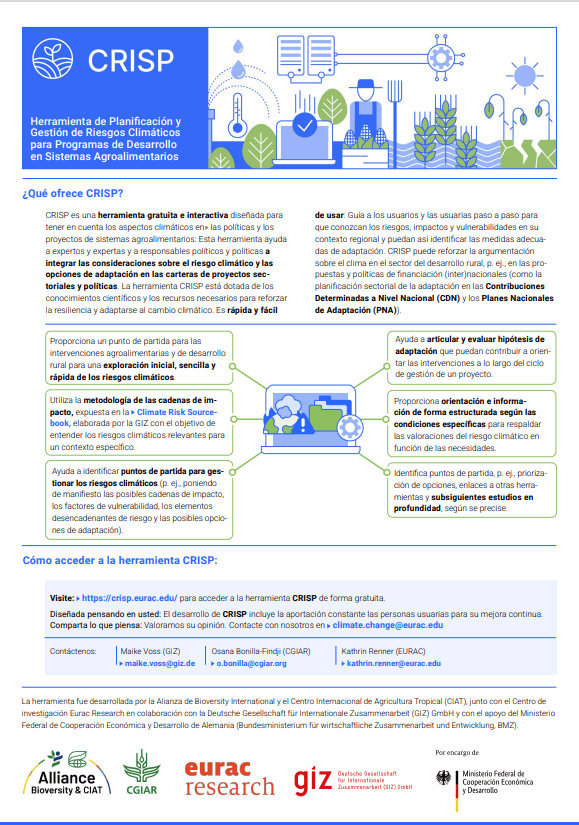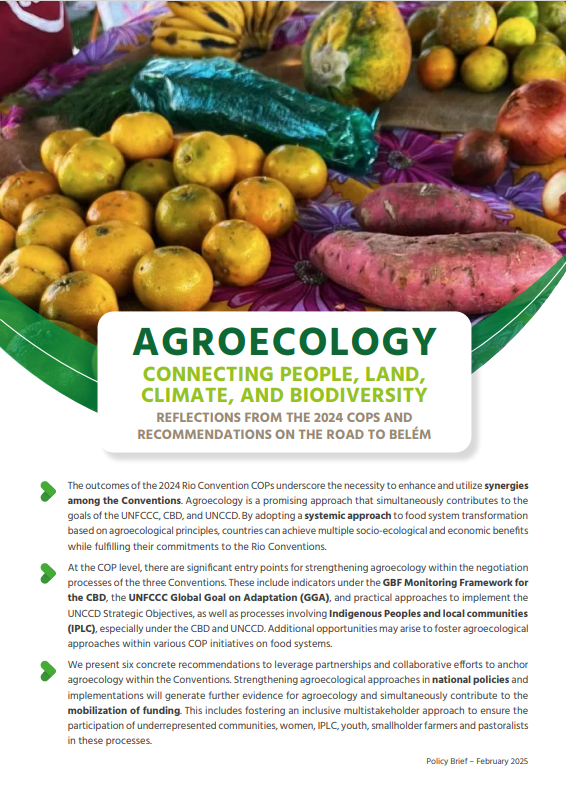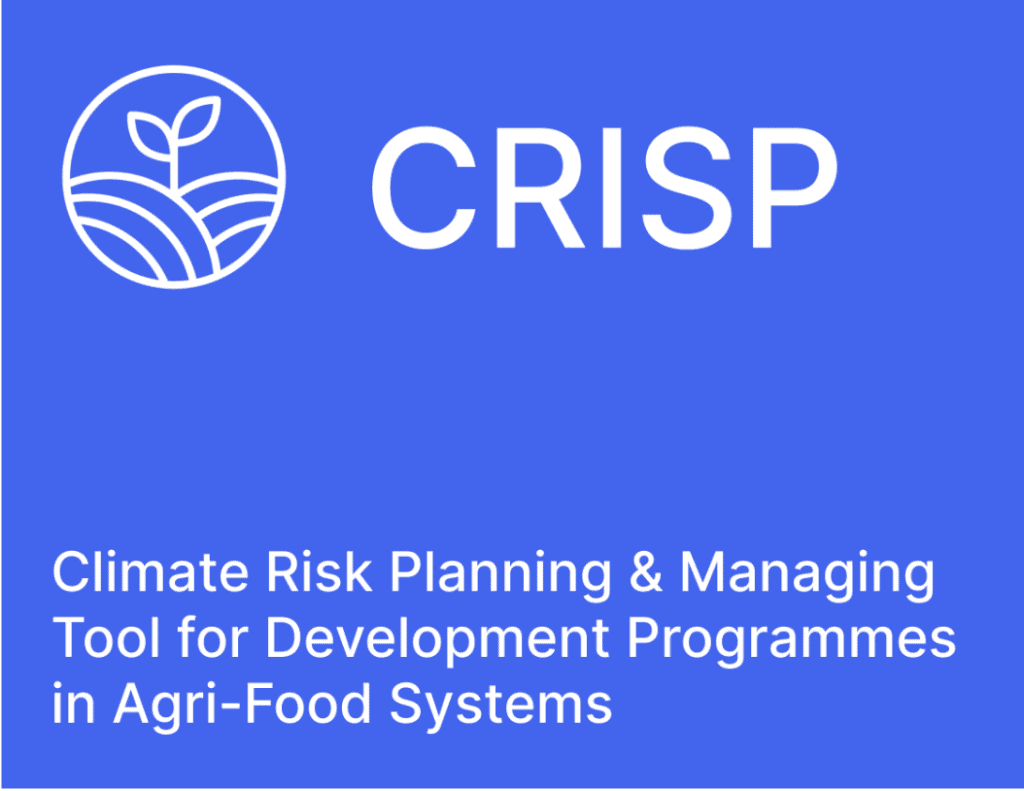Agroecology is a transformative approach to enhance resilience and climate change adaptation in agriculture and food systems
Agroecology is a transformative approach to enhance resilience and climate change adaptation in agriculture and food systems
The climate crisis and threats to food security are strongly interlinked. To achieve food security for all while preserving our ecosystems without exceeding our planetary boundaries, Agroecology aims at transforming agricultural and food systems towards climate resilience and adaptiveness.
Prevailing production and consumption patterns are leading to a loss of natural resources and are destroying ecosystems and their functions, which makes agricultural production systems more vulnerable to climate hazards. Climate change is exacerbating this development and pushes natural ecosystems to their limits – which has far-reaching consequences for the environment, the economy and humanity. At the same time, current food and land use systems account for 21-37% of global greenhouse gas (GHG) emissions and are thus one of the main drivers of climate change.
In the attempt to make food and land use systems more sustainable and climate-resilient, a transformational approach is needed to ensure the survival of humankind. In its’ Special Report on Climate Change and Land (SRCCL) the Intergovernmental Panel on Climate Change (IPCC) states that there is “robust evidence and high agreement”, that increasing the resilience of the food system through Agroecology and diversification is an effective way to achieve CCA. Adaptation measures based on Agroecology entail enhancement of agrobiodiversity; improvement of ecological processes and delivery of ecosystem services. They also entail strengthening of local communities and recognition of the role and value of indigenous and local knowledge.
Agroecology provides the system thinking needed and fosters comprehensive adaptation responses that evolve over time. Agroecology aims at developing sustainable food and land use systems and promotes climate-resilient and low-emissions strategies and practices.
With the Paris Agreement in 2015, 196 UN member states agreed to reform their development agendas towards the aim of limiting global warming to 1,5 to 2°C, while ensuring food production through adaptation and mitigation of climate change impacts. Framed by the National Determined Contributions (NDCs), each nation committed to measures in order to reduce its national greenhouse gas emissions and to adapt to climate change impacts.
Agroecology is proposed as a holistic approach to hedge against climate change that offers a range of potential co-benefits. Several countries specifically consider Agroecology in their NDCs. Leippert et al. (2020) analysed NDCs of 135 member states of the UNFCCC on their integration of agroecology. The results: 12,5% (17 countries) explicitly mention agroecology as part of their strategy. Also, in other processes related to the United Nations Framework Convention on Climate Change (UNFCCC), Agroecology is strongly supported. For example, the 2019 International Panel on Climate Change (IPCC) Special Report on Land and the 2019 CFS High Level Panel of Experts (HLPE) report highlight the potential of Agroecology for adaptation.
Agroecology is understood as a scientific discipline, a set of farming practices and a social movement. The United Nations Food and Agriculture Organization (FAO) describes Agroecology as a dynamic and inter-disciplinary approach to agri-food systems which includes all stages from production to consumption. It considers all environmental, socio-cultural, technological, scientific and political dimensions of agri-food systems, and explicitly promotes their transformation towards sustainability and resilience.
Agroecology is based on 13 principles, which serve as basic building blocks for its implementation. The agroecological transformation of a food system takes place across five interlinked levels. The figure below shows the interrelations between principles, transformation levels and their scale of integration.
Figure 1: Layers, levels and principles: An analytical framework for the holistic approach of agroecology. (Source: GIZ)
Agroecology opens the window of opportunity to promote CCA issues within the agricultural community and beyond.
Being a human-centred approach, Agroecology acknowledges that the food security crisis is intertwined with the climate crisis. Finding solutions to one can only be accomplished by considering the other. This requires a system approach, which includes different components of our complex global system of nature and human interaction and, which considers different spatial and disciplinary scales. The approach of Agroecology is based on the awareness that food systems are characterised through a high level of complexity and therefore strives to create an enabling environment for the adoption of best practices by tackling the spheres of policy and research.
Agroecology offers the opportunity to mainstream climate issues into the sector of food and agriculture on the level of practice, research and in the policy arena. In recent times, agriculture played a rather small role in the context of CCA at policy level. Agroecology can close this gap and offer a window of opportunity here. Many successful solutions are already being implemented. Check out these successful examples to learn more.
Following the 13 principles of Agroecology (see What is the theory behind Agroecology?), there are different entry points to CCA.
The principles of recycling, input reduction, soil health, biodiversity and economic diversification offer entry points for climate adaptation from an agroecosystem point of view. By applying these principles, rural communities can reduce income risks related to climate-induced crop failure. Diversification of agroecosystems e.g. through the integration of livestock and trees and the application of agricultural management practices like multi-cropping, nutrient cycling and conservation tillage further to a better resilience to droughts through improved water-retention and micro-climates. Beyond adaptation, an increased soil carbon sequestration and a reduced use of fossil fuels contribute to climate change mitigation.
Agroecology does not only address specific climate hazards. It further improves the provision of ecosystem services and ultimately leads to an enhanced resilience of farm systems and livelihoods to climate change.
More significant co-benefits of Agroecology for CCA arise from the effected system integration. Through integrating Agroecology on landscape and food system scale, more resilient landscapes and livelihoods can be realized.
Principles on community or societal level like co-creation of knowledge, social values and diets, fairness, connectivity, land and natural resource governance as well as participation serve as entry points to an improved adaptation to climate change by rural and urban communities. Participation and connections among stakeholders can serve a type of land and natural resource governance that is adequate to local conditions and flexible to a changing environment. Integrating different types of knowledge leads to locally adapted and relevant technological and social innovations, which strengthen livelihoods in their adaptiveness and resilience to climate change.
However, agroecology does not yet actively consider data on projected climate change, and therefore rather yields unplanned climate benefits. Still, by following the 13 principles of agroecology, CCA can be integrated into four different scales: the field scale, the farm and livelihood-scale, the landscape or community scale, and the food system scale (see Figure below). To realize wider benefits, increased public and private investment, adapted policies to subsidize agroecological production, same as closer collaboration between policy makers and researchers is crucial.
Figure 2: Framework for Understanding Agroecological Adaptation to Climate Change across Scales and how it is influenced by public and private sector governance (Source: Sinclair et al. 2019).
In summary, solid evidence demonstrates that Agroecology increases resilience, especially by strengthening a) ecological principles, in particular biodiversity, overall diversity and healthy soils; and b) social aspects, in particular co-creation and sharing of knowledge and building on traditions. As Agroecology is closely linked to Ecosystem-based-adaptation (EbA), EbA can serve as a connection between the agriculture and climate communities. On the one hand, one could see Agroecology as a part of the wider concept of EbA but with a focus on the agricultural and food sector or cultivated landscapes. On the other hand, one could say that Agroecology applies EbA within the first three levels of transformation (see What is the theory behind Agroecology?) but goes beyond “the use of biodiversity and ecosystem services as part of an overall adaptation strategy” by considering the political and societal sphere as well.



CRISP helps practitioners and policy makers in the agri-food sector to understand climate related risks, and to identify relevant adaptation options for theier spedific agricultural systems.

You need to load content from reCAPTCHA to submit the form. Please note that doing so will share data with third-party providers.
More InformationYou need to load content from reCAPTCHA to submit the form. Please note that doing so will share data with third-party providers.
More InformationYou are currently viewing a placeholder content from Google Maps. To access the actual content, click the button below. Please note that doing so will share data with third-party providers.
More InformationYou are currently viewing a placeholder content from Google Maps. To access the actual content, click the button below. Please note that doing so will share data with third-party providers.
More InformationYou are currently viewing a placeholder content from Mapbox. To access the actual content, click the button below. Please note that doing so will share data with third-party providers.
More InformationYou are currently viewing a placeholder content from OpenStreetMap. To access the actual content, click the button below. Please note that doing so will share data with third-party providers.
More Information